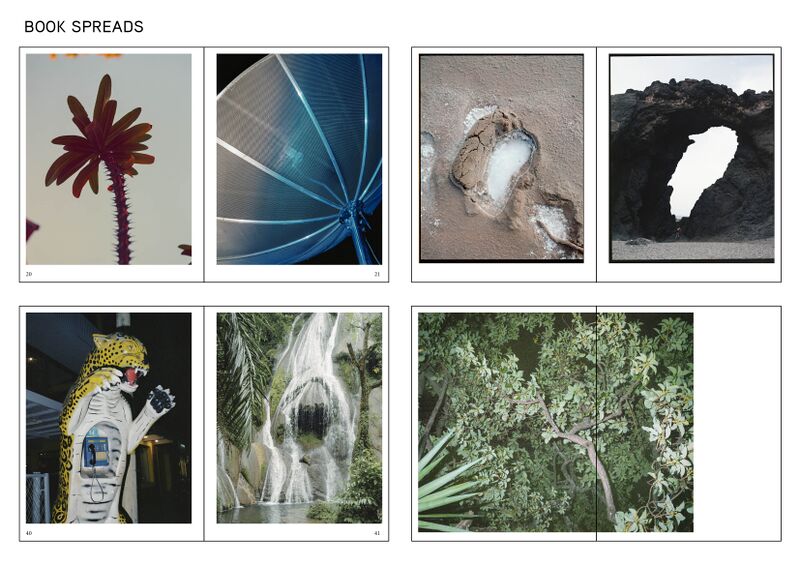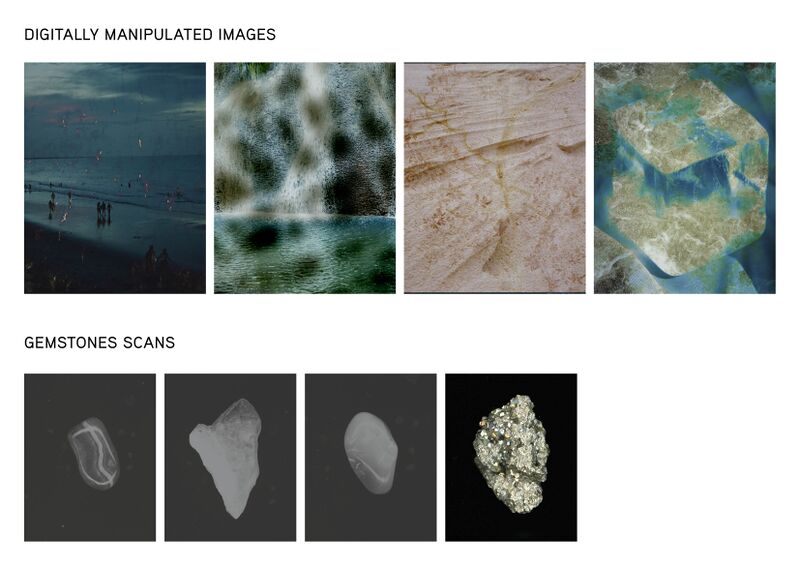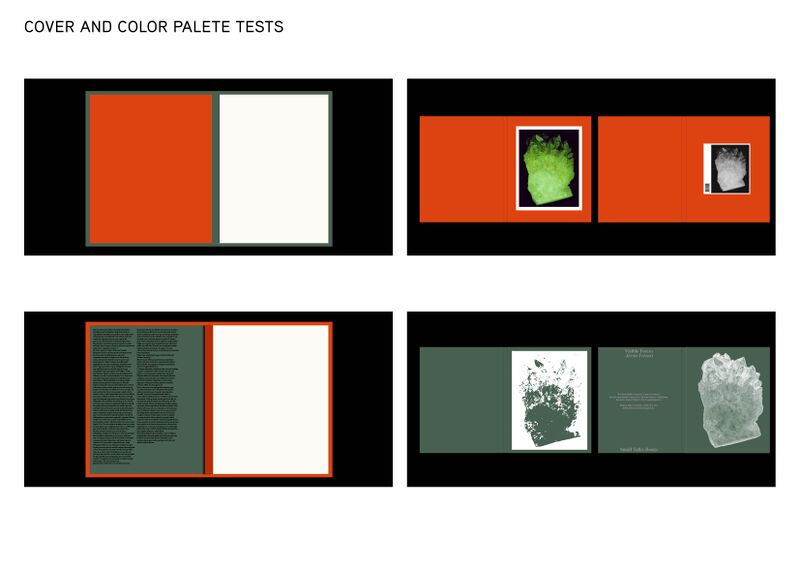SteveSuggestsAlecio-projectProposal
Steve Suggests
GRADUATION PROJECT OUTLINE
INTRODUCTION
As a true outdoor lover, practicing hiking and sport activities in nature, I accumulated hundreds of images of natural environments, plants details, city landscapes, exploring my surroundings with the medium I feel close to, the photo camera, in this spontaneous flow of events. During the last few years, my photography practice has focused on the development of photographic bodies of work with nature as the main subject matter. In 2019 I began to research more conciously the theme of Nature vs Culture, its evolution and further consequences. I developed the idea to consciously and actively producing a body of work that would talk about these subjects.
I looked for traces and signs of that nature/culture dualism and tried to translate the theoretical texts I was reading into visuals, The images shot started to compose a more unified body of work which reflected my fascination with the moment of transition of a natural environment into cultural material and how the natural world provides inspiration for the artificial landscape. [<<this is your research question I think]
1 What do you want to make?
The project I’m working on it’s called Visible Forces, and focuses on nature-culture dualism. I am interested in creating visual associations between the natural landscapes and the artificial world, showing how plants, rocks and animals are able to inspire humans in the way we think and build our surroundings.
On one hand I have produced a series of images with the nature at its core: landscapes, plants, rock formations that are in comparison with the artificial world such as building, vehicles and daily life objects. This comparison sometimes is more literal and visible, sometimes more subtle and less linear.
I am using photographs as main medium to investigate these topics but I’d like to deeper more into the research adding new layer of visual experimentations. [<<It seems you repeatedly try to justify your photographic practice with theory. I don't think you have to do this; value the fact that your form of knowledge production, as a photographer and editor of images, is valid.]
Recently, I have produced digitally manipulated images that originate from my landscapes photographs and through the use of a randomized computing process, some unexpected elements are added, turning the original photographs into more abstract representations of nature. These artifacts serve as digital traces. A human artificial product, that finds the fundamental inspiration in the surrounding world. [Explain how this opens new possibilities for you...]
[Cut the following questions:>>] What is the relation between what we see and what is there? [is your project really about phenomenology?]
What is the level of subjectivity in photography? [This question is not very precise, I don't understand it.]
Can photography be considered a reliable medium? [The general opinion is that it cannot]
[<<Please don't ask more than one research question- which you have established at the start as: how the natural environment transitions into a cultural material (and how the natural world provides inspiration for the artificial landscape). If you are not directing your attention to this question in this text, you are distracting the reader... These questions are all more or less interesting, but they take us away from your PRACTICE and your RESEARCH QUESTION. You seem to panic and throw a new thing in every now and then- have faith in your practice as a photographer, it does not need weighty theoretical justification...]
The plan is to print a book that will narrate my personal interpretation of the “culturalization” process, including photographs, scans, photograms and digital manipulated visuals.
2 How do you plan to make it?
I begun shooting the photographs in 2019, in Brazil, and during this year I have added some more images shot in The Netherlands and Italy.
During September 2021 I have started collecting minerals and gemstones: now I am in the process of scanning these natural objects and including them in the book as archival documents, treated in black and white. The idea is to print these images with a specific printing technique with a silver finishing coating.
Moreover, during the past months I have been working on the creation of few digitally manipulated images. Starting from my original pictures, I mix them up with the use of a software that creates a random final visual effect.
The other medium I’d like to begin experimenting with are photograms in the darkroom.
The idea is to develop further the following creations:
- Expanding the research around gemstones, cataloging 15 to 20 new stones;
- Produce more digitally manipulated files;
- Start experimenting with analog photograms in darkroom;
- Select, edit and assemble photographs;
- Work on the book shape, graphics and layout;
All of these outcomes will be organically integrated within the final book, conceiving a storyline as relevant as possible for my own narrative.
Regarding the book design, I am working with a duo of graphic designers, we are developing together the book concept, graphics layout and printing materials and supports.
Reflecting on the final outcomes, in addition to the book, I would like to create an immersive installation for the graduation show. My wish is to exhibit few images on a large scale, most likely printed on support such as light-boxes, accompanied by soundscapes, in order to create an immersive experience.
3 What is your timetable?
November: → Images editing → Start the images selection process → Collecting minerals
December: → Start working on the book layout, graphics and paper → Scan minerals → Start experimentation with photograms in darkroom
January: → Continue working on the book layout, graphics and paper → Continue producing new digital manipulated images
February: → Finalize the book layout and graphics → Start editing digital manipulated images and scans/analog photograms
March: → Finalize the book layout → Print dummy book
April: → Book Printing → Initial thoughts on the exhibition
May: → Book Launch → Start Working on the exhibition
June: → Build up the exhibition
4 Why do you want to make it?
I started to develop an interest in this topic few years ago, while I was reading texts about the anthropological studies conducted by Claude Lévi-Strauss, largely focused on ethnographic field research in Brazil. I was mainly struck by his analysis on themes such as linguistics, taboos, signs and traces.[<<Claude Lévi-Strauss is not in the bibliography. ]
As time passed, I started to dive deeply into these topics and I realized that there was a straightforward yet unconscious link with my photography research projects carried out the previous years. I’ve always been interested in the natural as well as constructed landscapes and my photography-eye is fascinated by that.
[cut and pasted]
I want to take advantage of the upcoming months to develop the narrative in the most efficient yet meaningful way, and find the right key. This is more a theoretical and research based practice. [<<But I'm not seeing much theory in this proposal. Your work seems to be driven by the material practice of making photographs and engaging with your subject. You do not have to justify it with theory, maybe ask instead, what theory will help your practice? In parallel I want to produce new digitally manipulated contents as well as photograms that can complete the visual work. [<<this is a big addition. The digital (technical) images need a little breathing space in your proposal. Please unpack: what these images are; what you want them to do; how they relate to your current work]
5 Who can help you and how?
Steve - Discussing the meaning of the work. Finding supportive literature and visual theories in relation to my work.
Ine and David - can help me with the narrative of the story as well as visuals selection and meaning.
Menno Boer - Darkroom and printing tips.
Graphic Designers I'm working with - For the design layout, typography and paper.
6 Relation to previous practice
I am interested in developing a practice that deals with creating and expanding narratives deriving from literary works and turn them into fictions or documents, in order to create images by using a tone that can be both revealing and recreational. [ <<This seems to be another outcome- I have to ask "what literary works?"- but I feel this is actually distraction.<< I would cut this sentence]
This project intends to be a continuation and a deeper dive into my ongoing research on Nature and Culture dualism.
As I previously mentioned, during the last year I’ve been working on different series of images that presented how natural landscapes and elements had inspired or affected our surrounding ‘artificial’ world.
For instance, in 2018 I developed a project called Port Talbot, a documentation of the environmental, social and economical effects on one of the most polluted city in the UK. During these years, my visual language as well as the approach evolved, but the fundamental premises remained.
My intention is to develop the concept more in different directions, theoretically as well as practically,[be more precise, how theoretically and how practically?] building a body of work that lives as a generative evolution of the previous ones.
7 Relation to a larger context
Nature and culture converge in many ways that span values, beliefs and norms to practices, livelihoods, knowledge and languages. As a result, there exists a mutual feedback between cultural systems and the environment, with a shift in one often leading to a change in the other. For example, knowledges evolve with the ecosystems upon which they are based, and languages contain words describing ecosystem components. If plants or animals are lost, then the words used to describe them are often lost shortly afterwards, and this changes the way the natural environment is shaped by the practices of those human communities. Nature provides the setting in which cultural processes, activities and belief systems develop, all of which feed back to shape biodiversity.
8 References/bibliography
DASTON, L., & GALISON, P. (2007). Objectivity. New York, Zone Books.
De Lattre, M. (2021). Mother’s Therapy. The Eriskay Connection.
Hartmann, J. (2021). Mastering the Elements. The Eriskay Connection.
Steadman, P. (1979). The Evolution of Designs Biological Analogy in Architecture and the Applied Arts /Philip Steadman. Cambridge University Press, 1979.
March L. and Steadman P. (1971), The Geometry of Environment (London, 1971), pp. 229-32.
Thompson, D. (1992). On Growth and Form (Canto) (J. Bonner, Ed.). Cambridge: Cambridge University Press. doi:10.1017/CBO9781107325852
Cook, Theodore Andrea, Sir. (1903). Spirals in nature and art. J. Murray. Retrieved from 10.5479/sil.25890.39088001368638
Cook, Theodore Andrea, Sir. (1914) The Curves of Life (London, 1914)
J. Stoots. Karl Blossfeldt Indisputably Modern, 2011
Murata, H., Material Forms in nature: The Photographs of Karl Blossfeldt. Scholfield, Peter Hugh. “The Theory of Proportion in Architecture.” (2011).



